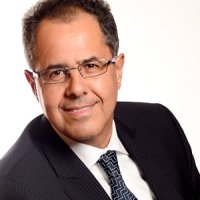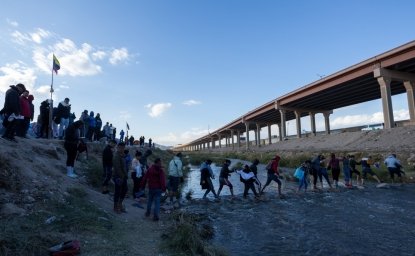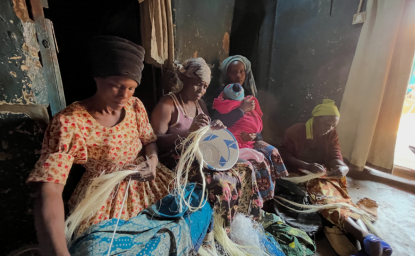By: Rafael Fernández de Castro* and Margarita Zavala**
This article was translated from Spanish by the Mexico Institute. Also in Spanish (See below)
President Barack Obama has said that the huge number of unaccompanied children who are coming to the United States from Central America represents an urgent humanitarian situation. He is right; the suffering of tens of thousands of children is unthinkable.
The humanitarian crisis that President Obama refers to is, however, only the tip of the iceberg of what has been happening in this corridor of intense migration - Central America (Guatemala, Honduras and El Salvador), Mexico and the United States - over the past two decades. This corridor has experienced recurring humanitarian crises for several reasons, including massive suffering of thousands, and perhaps hundreds of thousands, of human beings, not only children, but also young men and women.
The damages caused by Hurricane Mitch in 1988 and Stan in 2005 created similar devastation in Central America and in the state of Chiapas, Mexico. Hundreds of thousands of people were displaced from their homes, many of them to the United States.
Enormous misfortunes also occurred along this corridor in 2009 and in 2010. According to the National Human Rights Commission (CNDH), nearly 20 thousand migrants were kidnapped in Mexico. Although the statistics provided by the CNDH could be exaggerated, no one disputes that the kidnapping of migrants, in mass numbers, has not been slowed by authorities; thus, it remains a major threat to migrants passing through Mexican territory. A typical kidnapping operation involves abducting migrants traveling by bus or the "Beast", depriving them of their freedom by placing them in "safe houses" and forcing, through threats, their family in either Central America or the United States to pay ransom. If the kidnappers do not receive the money, the migrants are often killed and buried in mass unmarked graves.
In August 2010, San Fernando, Tamaulipas experienced one of the worst collective murders in the history of global migration: 72 migrants in transit were shot by the bloodiest criminal organization, Los Zetas. The move was a warning to smugglers who did not pay the "right of passage." The accounts of two survivors of the massacre, an Ecuadorian and Guatemalan, are chilling.
What makes the current humanitarian crisis of unaccompanied children distinct is that this time the problem exploded in the United States, forcing the White House to take action on the matter. Now, it is the press and U.S. television networks that have created huge media noise, emphasizing a mass migration of extremely vulnerable children and teenagers.
Why do children and young people migrate?
Like all migrants, Central American and Mexican children and youth are exposed to conditions that expel them from their countries of origin and conditions that attract them to the United States. Information and support networks, whether parents or relatives of children in the United States or Central America, play a very important role. In recent years, it has become impossible to cross the Mexico-US border without the aid of and payment to smugglers, better known as "polleros".
The conditions of expulsion in the North Central Triangle and even in parts of Mexico, such as Guerrero and Michoacán, are terrible. Abandoned by parents who already live in the United States, Central American children and youth experience miserable lives and are exposed to chronic violence. According to the United Nations Office on Drugs and Crime (UNODC), violence in Latin America is concentrated among young men, who perpetrate and suffer more than 90 percent of homicides. As Honduras has become the country with the highest homicide rate and the most violence on the planet, with about 90 homicides per 100,000 inhabitants, it is not difficult to understand that thousands of children and young people are willing to migrate to the United States, even with some awareness of the dangers of transmigration through Guatemala and Mexico.
Ivan is a Salvadoran teenager of thirteen that I met at the Hostel of Mrs. Olga in Tapachula, Chiapas more than a decade ago. The Hostel of Mrs. Olga, now called the Hostel of Jesus the Good Shepherd of the Poor and Central American Migrant, is a rehabilitation center for migrants mutilated by the "Beast" and other sick and convalescing patients. There were young Honduran girls who lost both legs that had learned to walk with prosthetics. Ivan was recovering from losing his left arm, which happened when, while asleep, the weak belt that kept him tied broke, causing him to fall off the train. At thirteen, it was already the third time he had tried to reunite with his mother in Los Angeles, California. With a sincere smile and as a fully unconscious teenager, he stated – “Fortunately, it was my left arm, as I am right-handed. I will still be able to write to my grandmother when I get to Los Angeles, because this time nothing will stop me from reaching the United States.”
In The Voyage of Henry, journalist Sonia Nassario details the reasons that led a 16-year-old Honduran to try eight times before getting to South Carolina to meet his mother. A decade ago, Henry had stayed behind with his sister in the care of his grandmother. In his early teens, he dropped out of school and began using drugs. The only light in the tunnel of misery and violence for Henry was the possibility of finding his mother in South Carolina and conquering the American dream.
Helping the then-First Lady of Mexico, Margarita Zavala, put a face to the high statistics of unaccompanied Mexican children migrating to the United States, we discovered the story of Mary, a four-year-old from Oaxaca. Smugglers arranged that Mary separate from her mother in order to cross the border into the United States. For four months, Mary was lost. Like one who finds a needle in a haystack, Mary's mother found her in a hostel in Mexico, for Mary never managed to enter the United States.
The stories of young Central American girls are just as heartbreaking. Girls between the ages of 15 and 16 from El Salvador and Honduras explained why they decided to leave their country, stating – "They were asking for my phone number and demanding me to be the girlfriend of one of the gang members. If you say no, they rape you and force you to be their girlfriend.” The other girl told us, "If you do not go with them voluntarily, they rape you, or take you to visit their friends who are in prisons. If they have a problem with your relative, they also rape you and harm you.”
The terrible conditions of expulsion in the Northern Triangle of Central America give sustenance to the sudden increase of unaccompanied migrant children. The trigger, however, has been the sparse rumor that they would be accepted and regularized, examines the White House. In 2005, a similar rumor increased the flow of Mexican migration to the United States.
Crisis creates opportunities
We should take advantage of the power of communication from the White House and the U.S. media to go beyond the tip of the iceberg that represents the crisis of unaccompanied children and accept that the Central America-Mexico-United States corridor is a geographical space with recurring humanitarian crises.
The first thing that is required is that the governments of the three Northern Triangle countries, as well as Mexico and the United States, stop acting unilaterally when presented with a crisis, whether it be Mexico with the San Fernando episode or Washington with the overcrowding of Central American children in its facilities. It is in the interest of these governments to accept the existence of this corridor and act accordingly. We face a common problem that requires shared responsibility.
This requires a continuing dialogue, or even a permanent mechanism, which would allow the five countries – Honduras, El Salvador, Guatemala, Mexico, and the United States – to not only address the crises but to detect and, to the greatest extent possible, prevent them. In this regard, Mexico has to play a very important role as it is a country of origin, transit and destination.
It is unbelievable that the Obama administration refuses to have a serious dialogue with the governments of the migration corridor because it could “arm Republicans” and debilitate the chances of immigration reform.
It is important that the governments of the Northern Triangle and of Mexico cooperate to prevent the number of unaccompanied migrant children to the United States from continuing to rise. But let us also require Washington to sit and have a dialogue to prevent and solve the situation. With or without immigration reform, we should address, for the sake of humanity, the recurring crisis of the Central American-Mexican-United States corridor.
*Rafael Fernández de Castro is Professor at ITAM and Jay and Debe Moskowitz Chair in Mexico-US relations at the Maxwell School of Citizenship and Public Affairs of Syracuse







